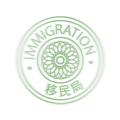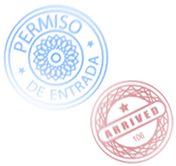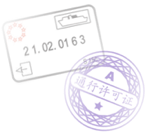[I misplaced my Peru notes so the following was written after the fact and is somewhat sparse.]
5/15
When I arrived in Cusco it became immediately obvious that I needed to find a place to park the truck and trailer. Many of the street are cobblestone made for carts and that date from the time of the Incas and it was a certainty that if I didn’t get parked I was going to get into trouble real quick. As it was, I found myself on one street where there was barely enough room to get through and only with my mirrors over the sidewalks and requiring people to duck or retreat into a doorway in order for me to get by.
I found a temporary place to park and set out to find a place on foot. I got some directions and payed a taxi to lead me there and bring me and my bags back to a hotel. There the truck set until my day of departure, 5/25. I was anticipating doing a lot of walking but after La Paz I was in shape for it.
I found a relatively cheap hotel, settled in, and hit the streets on foot. The culture of the city struck me as quite complex, a mix of the ancient Inca, current indigenous, tourist, and cosmopolitan. Cusco was the capital of the Inca empire. The Spaniards and the Catholic Church pretty much razed everything they came across in Peru, using the ceremonial buildings as their quarries for their own ceremonial sites – cathedrals and, today, their hotels and MacDonalds – and built upon the Inca foundations. The various sites, I've been told, were eighty percent destroyed but they are still amazing to behold. and much of the ancient is still there and built upon and many of the colonial-era buildings are still in use and the grandest have been converted to museums and commercial businesses. There was a lot to see.
I got in a lot walking from one museum or cathedral to another. There were acres of gold leaf in the cathedrals and lots of interesting exhibits in both them and the museums. Fortunately for you, in one sense, there was only one museum that allowed cameras, Museo de Arte Precolumbino, Another consequence of Cusco being the Inca capital is that there are many ruins in the immediate vicinity so I made a visit to the South America Explorers Club [www.saexplorers.org/] to get some input on what there was to see and the best methods to see it. They recommended a local guide so I called him and made an appointment with him to pick me up at my hotel. He picked me up the next morning and we started a tour. Over the next two days we visited Q’enco, Puka Pukara, Tambomachay, Saqsawaman, Moray, Salineras, Pikillaqta, and Pisaq. The second day of the tour ended with him dropping my bag and I off at Ollantaytambo where I was scheduled to catch a train to Aguas Calientes, at the base of Machu Pichu.
Taking a bus out of Aguas Calientes is the only way to the site other than trekking. The busses begin their day with their first pickup at 5:30 AM. I got a room and was up bright and early figuring that I get to the site ahead of the crowd by being their for the first departure. At five AM I was on the street looking for coffee. I found a place with lights on and people eating and wondered in. There was a buffet table and no sign of a cashier or waiter so I helped myself and sat down to eat. While eating I figured out that I was in a bed-n-breakfast and that the other people in the room were guests. On my way out I gave one of the help a few dollars. Oh, on the buffet table, in addition to the fruits, juices, coffee, tea, etc. there was a breadbasket of coca leaves. Nice touch. I found my way to the bus departure point by 5:30 and found a very long queue. So much for beating the crowd. I watched twenty Mercedes Marco Polo busses fill up and depart. There may have been more after I left. Each held about forty people. With some simple arithmetic, it was obvious that Machu Pichu is a real money machine.
Fortunately, the Spaniards never found Machu Pichu so is pretty much intact. Someone said that you can't take a bad picture here but I put that theory to the test. After a long day of climbing (and lots of pictures) it was back on the train that evening for the ride back to Ollantaytambo where my driver was to meet me for the ride back to Cusco. The next day I got a cab to take my bags and I back to my truck and then lead me out of town - a good decision. I was on the road direct to Guayaquil Equador.
When I got the Guayaquil I drove directly to the port area to find a place to park my truck and trailer since finding a secure place for it in the city proper would have been a real chore at best. I anticipated that it would take at least a day or two to get the documentation completed and hand over the truck. I drove around and checked likely looking places with no luck. Finally I parked the truck in a semi-residential area with the intent of stopping people on the street - an effective ploy in my experience. The first fellow I stopped more or less grabbed me and took me around to few places pleading my case. We struck gold at the third place which was a high-walled-in girls school ran by Catholic nuns, with a big steel door and a bell button. An older nun led me to a back area next to a soccer field. I gave her all of my refrigerated food, a box of pads and pens, and a couple of soccer balls, all of which she seemed pleased to get. Later, upon my departure I gave her more food and some money.
Given my experience on getting my truck into the country, I decided to try a different tack and use a broker. Making a long story short and sparing you the gruesome details, that was a mistake. I got lots of promises, e.g., truck to be on the boat in two days, and it took me a week to figure out that the broker was flummoxed and was being less than candid with me. I then hired an interpreter who was the mother of my hotel’s desk clerk. Her family was originally from Ecuador, lived in California for five years or so, and then moved back. We went to the port and spent two full days at the port getting the truck and trailer into a container. Enough said. I would have been much better off doing the whole thing myself. Lesson - Do not bring your vehicle into or out of Ecuador via the port.
I caught the next plane out to Los Angeles.
July 12. Back Home and, two weeks later, back in Long Beach to pick up the truck and trailer.
No dramas in getting my stuff through customs. I just went to the right buildings with the right papers. There were no inspections. I brought back wine and beer but no drugs though the trailer could have been packed.
The truck broke loose from its bonds in the container and mashed up the front of the trailer a bit (fixable) including ripping apart its wiring harness, perhaps having to do with the tropical storm/hurricane that it went through west of Mexico. No damage to the truck other than smashing the receptacle for the trailer wiring. It took me a couple of hours of splicing to get everything functional before I could hit the road for home. It was a pleasure to get back home, particularly after the cacophony of Guayaquil. I've been in a lot of noisy cities but Guayaquil is the heads up champion. Horns are the seemingly primary driving instrument. Honk before cutting off the driver next to you, to let another driver know you are there so he doesn't cut you off, when the light changes, coming to an intersection and, if you're a taxi, when you spot a pedestrian in case he/she needs a taxi. The din is literally continuous. Since returning to the states I think that I have heard a single horn honk.
That’s all for this trip, folks.
Peru pictures here.
Return to Home and links to other trips.





